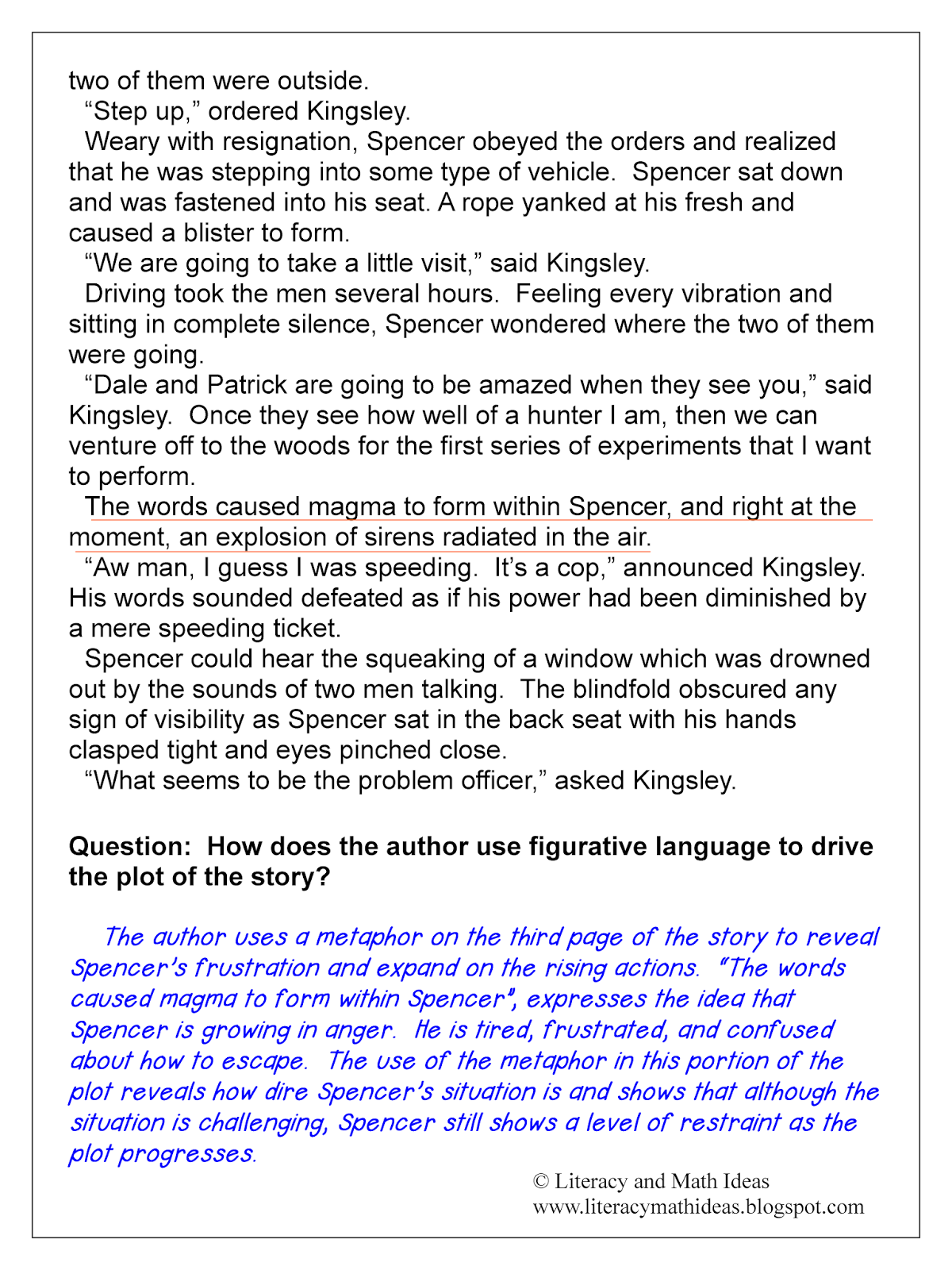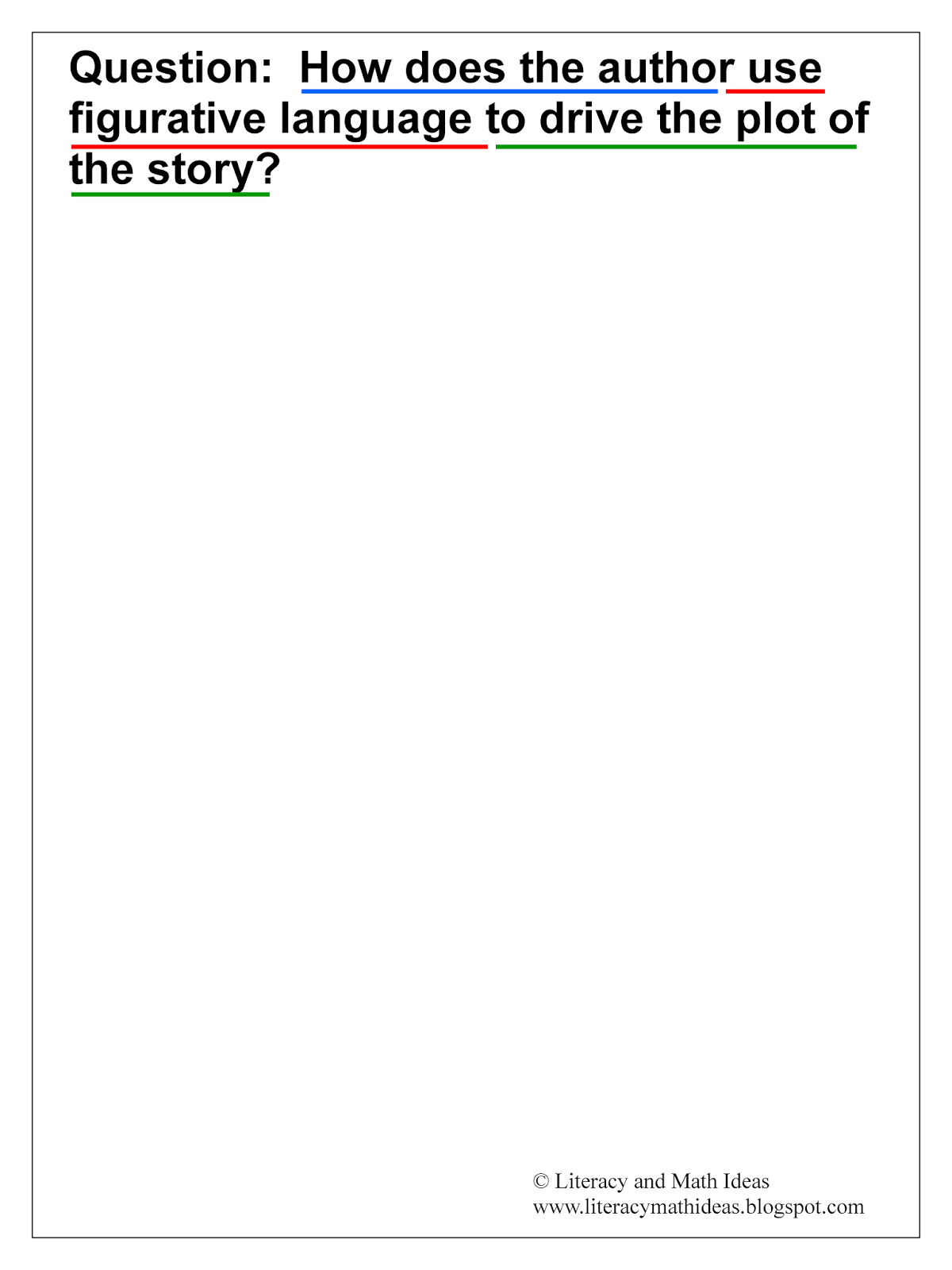One of the greatest shifts that students will face when answering test questions is level of complexity. A greater number of questions will require students to evaluate and break down what they read. Rather than identifying a trait that a character possesses from a list of answer choices, students are expected to supply text details to support the character trait that they infer about a character.
In addition to more complex questions, students will also face multi-step reading questions. These are questions that require a student to address multiple parts of a question. Let us look at an example.
Question: How does the use of figurative language drive the plot of the story?
Look at the example below.
Although there is one question mark, students must do multiple things in order to fully answer this question.
If a student only gives an example of a metaphor, or if a student only explains the details that helped reveal rising actions, or etc., then the student would have only partially answered the question.
To prevent this, practice breaking down a question with the class. I worked with my students on underlining different parts of the question to ensure that their responses were fully explained.
There are not any hard rules in terms of the different parts that should be underlined in the question. The big idea I wanted to convey to students is not to rush through questions. Instead, they should read each question with a pencil in their hands. Each word and phrase should be broken down to ensure a complete response.
At the upper elementary and middle school grade levels, many of the released Common Core Reading examples are at this same level of complexity. Understanding these written response question answering principles will benefit the students on their daily assignments and on their future Common Core assessments.




No comments:
Post a Comment